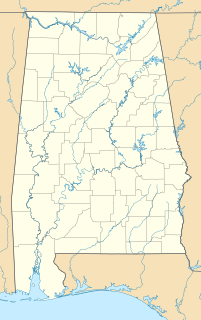 W
WThe Alabama Army Ammunition Plant (ALAAP), was a United States munitions plant built and operated during World War II. The facility is located four miles (6 km) north of Childersburg, Alabama in Talladega County, Alabama.
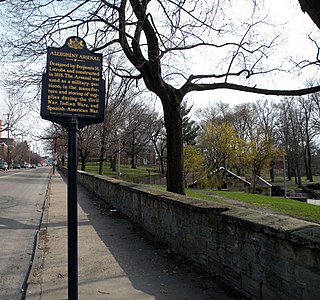 W
WThe Allegheny Arsenal, established in 1814, was an important supply and manufacturing center for the Union Army during the American Civil War, and the site of the single largest civilian disaster during the war.
 W
WArsenal Technical High School, commonly referred to as Tech or Arsenal Tech, is a public high school in Indianapolis, Indiana, United States, which is run by the Indianapolis Public Schools district. The school is located on a 76-acre (31 ha), multiple building campus east of downtown Indianapolis, and is the only such type school in Indiana.
 W
WThe Badger Army Ammunition Plant or Badger Ordnance Works (B.O.W.) is an excess, non-BRAC, United States Army facility located near Baraboo, Wisconsin. It manufactured nitrocellulose-based propellants during World War II, the Korean War, and the Vietnam War. It was a large munitions factory during World War II. As of 2013, the facility was in the end stages of demolition and remediation in preparation for property transfer.
 W
WThe Black Hills Ordnance Depot (BHOD) was a munitions storage and maintenance facility formerly operated by the Ordnance Corps of the United States Army. The depot was located in Fall River County, in far southwestern South Dakota about eight miles south of the town of Edgemont.
 W
WThe Blue Grass Chemical Agent-Destruction Pilot Plant (BGCAPP) is a chemical weapons destruction facility built to destroy the chemical weapons stockpile at the Blue Grass Army Depot (BGAD), near Richmond, Kentucky. The plant is dedicated to the destruction of 523 short tons (474 t) of nerve agents sarin (GB) and VX, and mustard agent, which constitute about two percent of the United States chemical weapons stockpile.
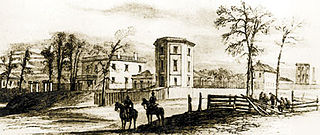 W
WThe Fayetteville Arsenal in Fayetteville, North Carolina was built in 1838 because during the War of 1812 the United States government realized that the existing distribution of weapons and ammunition factories was not adequate for the defense of the country. A program was begun to provide more Federal arsenals which would be distributed so that no area of the country would be too far away from an arms depot. Bladen County Representative James McKay introduced House Resolution #374 for inclusion of an arsenal at Fayetteville.
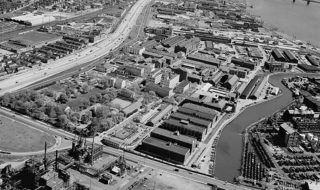 W
WThe Frankford Arsenal is a former United States Army ammunition plant located adjacent to the Bridesburg neighborhood of Northeast Philadelphia, Pennsylvania, north of the original course of Frankford Creek.
 W
WGopher Ordnance Works was a smokeless powder production plant near Coates and Rosemount, Minnesota, United States. It was first opened in 1943. The plant was closed soon after the end of World War II. There are some remains still at the original site which is visible from U.S. Route 52 and County Road 46.
 W
WThe Green River Ordnance Plant, also known as the Green River Arsenal, was a large munitions factory complex between Dixon and Amboy in Lee County, Illinois.
 W
WThe Indiana Army Ammunition Plant was an Army manufacturing plant built in 1941 between Charlestown and Jeffersonville, Indiana. It consisted of three areas within two separate but attached manufacturing plants:Indiana Ordnance Works Plant 1 (IOW#1): made smokeless powder Indiana Ordnance Works Plant 2 (IOW#2): made rocket propellant Hoosier Ordnance Plant (HOP): manufactured propellant charge bags
 W
WJoliet Army Ammunition Plant (JOAAP, formerly known as the Joliet Arsenal) was a United States Army arsenal located in Will County, Illinois, near Elwood, Illinois, south of Joliet, Illinois. Opened in 1940 during World War II, the facility consisted of the Elwood Ordnance Plant (EOP) and the Kankakee Ordnance Works (KNK). In 1945, the two were deactivated and combined forming the Joliet Arsenal. The plant was reactivated for the Korean War and renamed Joliet Army Ammunition Plant during the Vietnam War. Production of TNT ended in 1976, and the major plant operations closed shortly after in the late 1970s. The facility briefly revived an automated load-assemble-pack (LAP) artillery shell operation that was managed by the Honeywell Corporation during the Reagan administration in the 1980s before it was finally closed.
 W
WLake City Army Ammunition Plant (LCAAP) is a 3,935-acre (15.92 km2) U.S. government-owned, contractor-operated facility in northeastern Independence, Missouri, that was established by Remington Arms in 1941 to manufacture and test small caliber ammunition for the U.S. Army. The facility has remained in continuous operation except for one 5-year period following World War II. As of July 2007, the plant produced nearly 1.4 billion rounds of ammunition per year. In addition, Lake City performs small caliber ammunition stockpile reliability testing and has ammunition and weapon testing responsibilities as the NATO National and Regional Test Center. LCAAP is the single largest producer of small arms ammunition for the United States Armed Forces.
 W
WThe former Lake Ontario Ordnance Works (LOOW) was a 7,500-acre (3,000 ha) military installation located in Niagara County, New York, United States, approximately 9.6 mi (15.4 km) north of Niagara Falls.
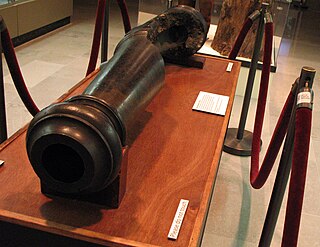 W
WThe Liberty Arsenal, known by Federal authorities as the Missouri Depot was a United States Army arsenal at Liberty, Missouri in Clay County, Missouri. The depot was seized twice by Southern partisans, once during the Kansas troubles in 1855, and again shortly after the outbreak of the American Civil War. It was located generally west of the junction of Missouri Route 291 and old 210 Highway.
 W
WThe Louisiana Army Ammunition Plant, formerly known as the Louisiana Ordnance Plant or as The Shell Plant, is an inactive 14,974-acre (60.60 km2) plant to load, assemble and pack ammunitions items. During production from 1942 to 1994, the Army disposed of untreated explosives-laden wastewater in on-site lagoons, contaminating soil, sediments and groundwater with hazardous chemicals. It is government-owned, contractor-operated facility located off U.S. Highway 80 in Webster Parish near Doyline between Minden and Bossier City, Louisiana. Part of LAAP is known as Camp Minden, a training center for the Louisiana Army National Guard. LAAP and Camp Minden have become nearly interchangeable terms, with most references to Camp Minden.
 W
WThe Mount Vernon Arsenal is a former United States Army munitions depot (arsenal), was used as a prison for captured Native Americans, and was served as a psychiatric hospital. It is listed on the National Register of Historic Places in Mount Vernon, Alabama. The site is home to the now closed Searcy Hospital. It was listed on the National Register of Historic Places on May 26, 1988 as the Mount Vernon Arsenal-Searcy Hospital Complex.
 W
WThe Program Executive Office, Assembled Chemical Weapons Alternatives is responsible for the safe and environmentally sound destruction of chemical weapons stockpiles stored at the Blue Grass Army Depot, Kentucky and the U.S. Army Pueblo Chemical Depot, Colorado. In 1996, the United States Congress established the ACWA program to test and demonstrate alternative technologies to baseline incineration for the destruction of chemical weapons. The ACWA program oversaw the design and construction of the two chemical weapons destruction pilot plants – the Pueblo Chemical Agent-Destruction Pilot Plant (PCAPP) in Colorado, and the Blue Grass Chemical Agent-Destruction Pilot Plant (BGCAPP) in Kentucky. Today, PCAPP is in its operations phase. BGCAPP Static Detonation Chamber is operational while the main plant is in the pilot testing phase. ACWA will oversee both plants through pilot testing, operations and closure.
 W
WThe Pueblo Chemical Agent-Destruction Pilot Plant (PCAPP) is a chemical weapons destruction facility that has been built to destroy the chemical weapons stockpile at the Pueblo Chemical Depot, in southeastern Colorado. The depot contains munitions that are part of the U.S. national chemical weapons stockpile. Before chemical weapons disposal began at PCAPP, these munitions contained 2,613 U.S. tons of mustard agent. The weapons have been stored at the 23,000-acre (93 km2) depot since the 1950s.
 W
WThe Rock Island Arsenal comprises 946 acres (383 ha), located on Arsenal Island, originally known as Rock Island, on the Mississippi River between the cities of Davenport, Iowa, and Rock Island, Illinois. It lies within the state of Illinois. It is home of First Army headquarters, and the US Army's Center of excellence for Additive Manufacturing. The island was originally established as a government site in 1816, with the building of Fort Armstrong. It is now the largest government-owned weapons manufacturing arsenal in the United States. It has manufactured military equipment and ordnance since the 1880s. In 1919–1920 one hundred of the Anglo-American or Liberty Mark VIII tanks were manufactured, although too late for World War I. It is designated as a National Historic Landmark.
 W
WThe Rocky Mountain Arsenal was a United States chemical weapons manufacturing center located in the Denver Metropolitan Area in Commerce City, Colorado. The site was completed December 1942, operated by the United States Army throughout the later 20th century and was controversial among local residents until its closure in 1992.
 W
WThe Sangamon Ordnance Plant was a United States Army ammunition manufacturing facility constructed and operated during World War II. It was located west of Illiopolis in Sangamon County, Illinois encompassing 20,000 acres (80 km²). It began as two separate plants, the Sangamon and the Oak Ordnance Plants, separated by Illinois Route 36 and operated by Remington Rand and Johnson & Johnson respectively. Prior to the end of World War II, the facility was consolidated into the Sangamon Ordnance Plant, operated by Remington Rand.
 W
WSavanna Army Depot was a 13,062-acre (52.86 km2) installation, located on the eastern bank of the Mississippi River, in Carroll and Jo Daviess counties, around seven miles (11 km) north of Savanna, Illinois. It was opened in 1917 as a proving and testing facility for weapons developed at Rock Island Arsenal. In 1921 it became a weapons depot. The U.S. Environmental Protection Agency (EPA) listed the depot as a Superfund site in 1989. The depot was selected for closure through the Base Realignment and Closure process in July 1995 and was officially closed on March 18, 2000. The Jo-Carroll Local Redevelopment Authority (LRA) was established to redevelop a portion of the property for commercial and business usage referred to as the Savanna Depot Park. On September 26, 2003, the United States Department of Defense agreed to transfer 9,404 acres (38.06 km2) of land to become the Lost Mound Unit of the Upper Mississippi River National Wildlife and Fish Refuge. 3,022 acres (12.23 km2) were initially transferred with the rest to be transferred following environmental cleanup. The portion near Lock and Dam No. 12 was transferred to the United States Army Corps of Engineers and a small part to the Illinois Department of Natural Resources.
 W
WSierra Army Depot (SIAD) is a United States Army post and military equipment storage facility located near the unincorporated community of Herlong, California. It was built in 1942 as one of several ammunition storage facilities located far enough inland to be safe from Japanese attack, yet close enough to western military posts and ports to facilitate shipment of supplies. The site also met the requirement that the depot be in a dry and isolated area.
 W
WThe St. Louis Arsenal is a large complex of federal military weapons and ammunition storage buildings operated by the United States Air Force in St. Louis, Missouri. During the American Civil War, the St. Louis arsenal's contents were transferred to Illinois by Union Captain Nathaniel Lyon, an act that helped fuel tension between secessionists and those citizens loyal to the Federal government.
 W
WThe Sunflower Army Ammunition Plant was a smokeless powder and propellant manufacturing facility in northwest Johnson County, Kansas, south of De Soto, owned by the United States Government and operated under contract, primarily by Hercules Aerospace Company.
The Watervliet Arsenal is an arsenal of the United States Army located in Watervliet, New York, on the west bank of the Hudson River. It is the oldest continuously active arsenal in the United States, and today produces much of the artillery for the army, as well as gun tubes for cannons, mortars, and tanks. It has been a National Historic Landmark since 1966.
 W
WWeldon Spring Ordnance Works (WSOW) was a 17,323-acre (70.10 km2) U.S. Government-owned, contractor-operated (GOCO) facility in St. Charles County, Missouri, 55 km west of St. Louis. The site was originally operated by the Atlas Powder Company during World War II from 1941 to 1945 to produce explosives. The Atomic Energy Commission acquired part of the property in 1955, and Mallinckrodt, Inc. processed uranium ore from 1957 to 1966 under contract. The site has been divided into several parcels, and ownership has transferred over the years. Two portions of the original WSOW property are now Superfund sites that require substantial cleanup efforts. The environmental remediation of the WSOW site is currently designated as a major project of the Defense Environmental Restoration Program of the United States Department of Defense. Part of the original property is still used by the Army Reserve as the Weldon Spring Training Area.
 W
WWest Virginia Ordnance Works (WVOW) was a United States Army ammunition manufacturing facility constructed and operated during World War II. It was located north of Point Pleasant, West Virginia in Mason County encompassing 8,323 acres (33.68 km2). The $45 million plant employed 3500 at its peak and operated from 1942 to 1945. The site was disposed of following the war and land was utilized by creating a landfill, the McClintic Wildlife Management Area, the Mason County Airport and an industrial park among others.